1.Product Overview
The FMCW radar level meter antenna transmits a frequency modulated continuous wave signal (76-81GHz) at the speed of light. On encountering the surface of the measured substance, part of its energy is reflected back into the same antenna. This echo signal mixed with the transmitted one results in an output intermediate frequency signal whose frequency is proportional to the distance from the antenna to the medium. Thus, calculating this distance becomes possible.The KD-FMF series sensor is a 120G frequency modulation radar type level measuring instrument with a measuring distance of up to 30 meters. The antenna is further optimized, and the new and fast microprocessor can perform higher-speed signal analysis and processing, so that the meter can be used for measuring high temperature and high pressure and other environmental liquids.

2.The Product Principle
While detecting bulk solids in a grain silo, not only is the mounting of the grain bin level sensor important, also the levels of the grains play a factor in the accuracy of the continuous level measurement.When using ultrasonic technology as continuous level sensors, these following scenarios will help your application succeed or help you understand the limitations of using this grain bin level sensor type as grain level indicators.The level of grain in a bin affects how well and how accurately the levels will be detected by level monitors.
Grain gauge bin level indicator used in industry mainly have three bands, namely C-band, K-band, and W-band. The emission frequencies of different bands are different, and the grain bin level sensor product performance also varies.We produce millimeter-wave radar level meters in the W-band and 76-81GHz.
The general principle of the FM continuous wave radar level gauge is that the radar emits electromagnetic waves on the top of the tank, and the electromagnetic waves are received by the radar after being reflected by the medium. The frequency difference δ f between the received signal and the transmitted signal is proportional to the distance R from the surface of the medium. : R= C (speed) *δ f (frequency difference) /2/K (frequency modulation slope). Because the speed of light C and the frequency modulation slope K are known, the frequency difference δ f can be estimated to obtain the distance R of the material surface at the radar installation position, and then through the known total height of the tank, subtract the spatial distance from the radar to the material surface ( Referred to as the air height), the height of the material grain bin level indicator is obtained.
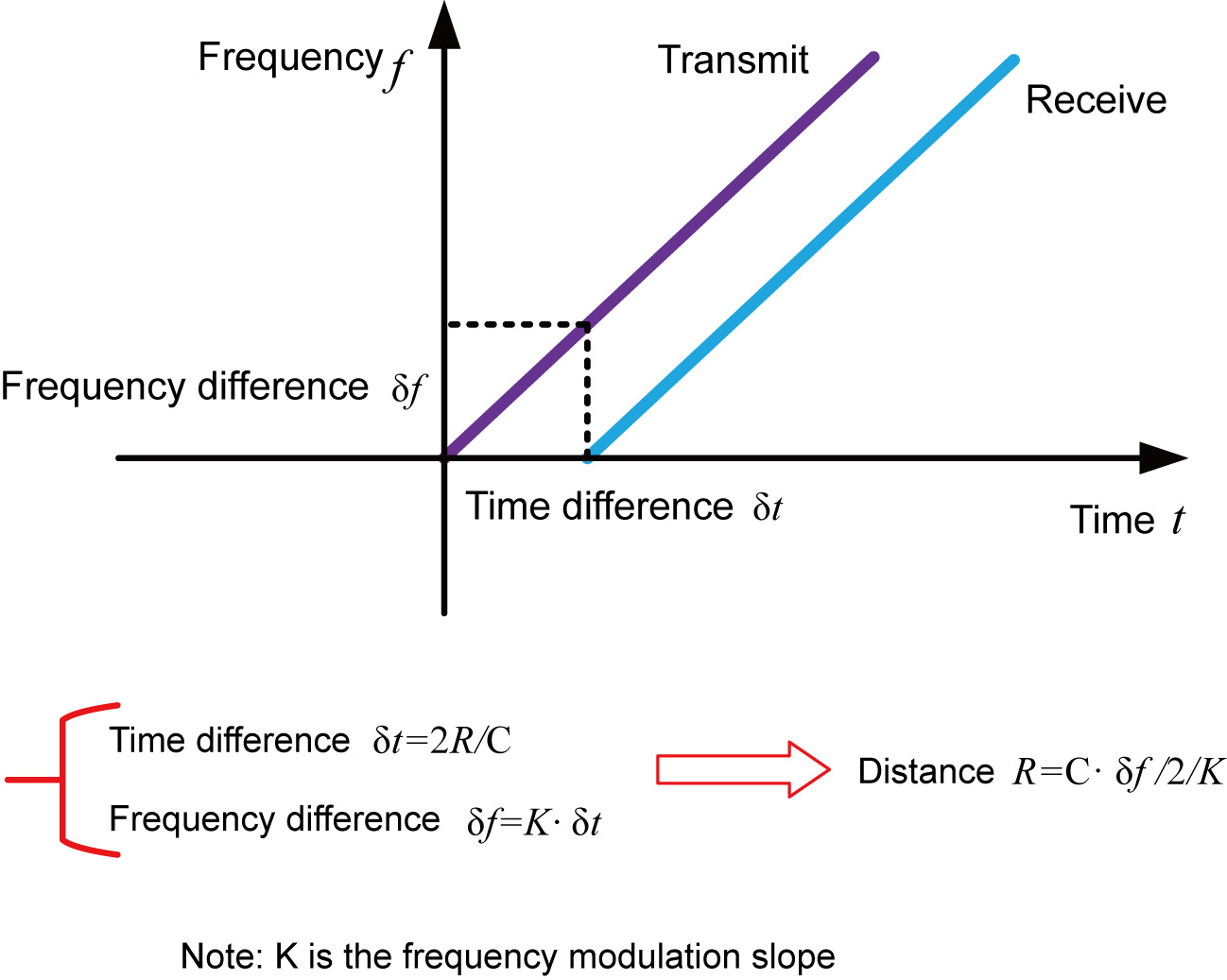
3.Protection Grade
This grain bin level sensor fully meets the requirements of protection class IP66/67, please ensure the waterproofness of the cable sealing head. As shown:
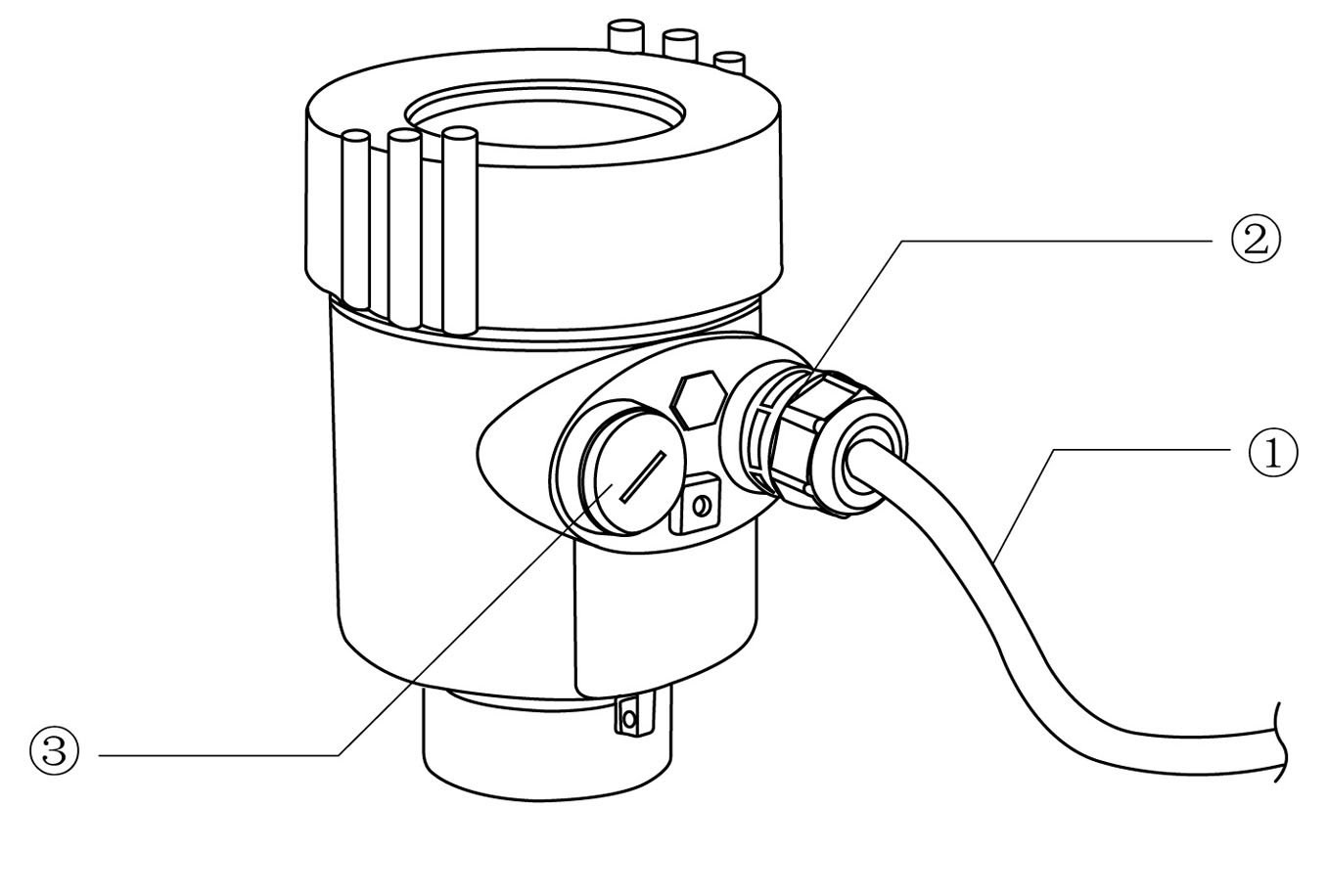 | How to ensure that the installation meets the requirements of IP67: Make sure that the sealing head is not damaged. Make sure that the cable is not damaged. Make sure that the cables used meet the requirements of the electrical connection specifications. Before entering the electrical interface, bend the cable downward to ensure that water does not flow into the housing, see ① Please tighten the cable sealing head, see ② Please block the unused electrical interfaces with blind plugs, see ③ |
4.Product Specification
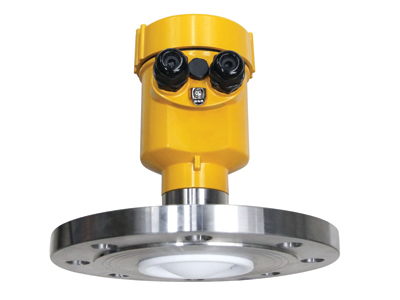 | Measuring medium: solid Measuring range: 0.3m~120m Process connection: flange ≥DN80 Process temperature: -40~110℃ Process pressure: -0.1~0.3MPa Precision: ±5mm Protection level: IP67 Frequency range: 120GHz Power supply: two-wire system (DC24V)/four-wire system (DC12V~24V)/four-wire system (AC220V) Explosion-proof grade: Exia ⅡC T6 Ga / Exd IIC T6 Gb Housing: Aluminum/Plastic/Stainless Steel Signal output: two-wire system 4...20mA/HART protocol/four-wire system 4...20mA /RS485 Modbus |
5.Appearance of Size
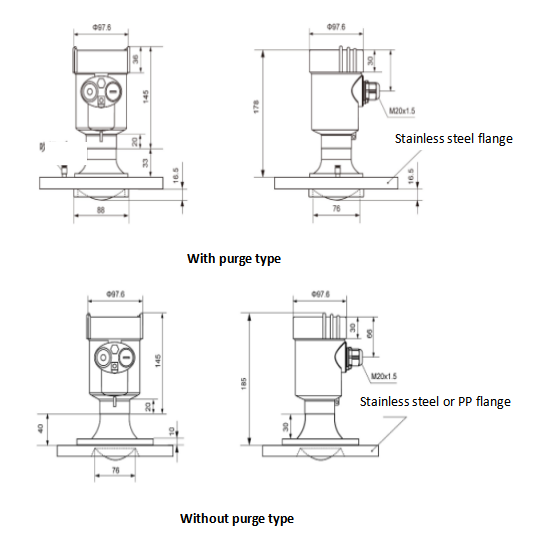
6.Technical Parameters
Process connection | Flange | |||
Material | 316 stainless steel, PP | |||
Shell | Seal between housing and housing | Silicone Rubber | ||
Shell window | Polycarbonate | |||
Ground terminal | Stainless steel | |||
Supply voltage | four-wire system | Standard | (12~24)V DC | |
Power consumption | max80mA DC24V/2W | |||
Allow ripple | <100Hz | Uss<1V | ||
(100~100K)Hz | Uss<10mV | |||
Shell | (198~242)V AC | four-wire system | ||
100V AC | four-wire system | |||
Cable parameters | Cable entry/plug | 1 M20x1.5 cable entry | ||
1 blind plug M20×15 | ||||
Ground terminal | Conductor cross section 2.5mm2 | |||
Output parameters | output signal | (4~20)mA/RS485Modbus | ||
Resolution | 1mm | |||
Fault signal | Current output unchanged; 20.5mA; 22mA; 3.9mA | |||
Integration time | (0~20)s, adjustable | |||
Blind spot | 0.1m/0.2m/0.3m | |||
Maximum measurement interval | 150 meters | |||
Measuring distance | About 1 second (depending on parameter settings) | |||
Adjust the time | About 1 second (depending on parameter settings) | |||
Adjust time, working storage and transportation temperature | (-40~80)℃ | |||
Process temperature | KD-FMF11 | -40~80℃ | ||
KD-FMF12 | -40~110℃ | |||
KD-FMF13 | -40~110℃ | |||
KD-FMF15 | -40~200℃ | |||
KD-FMF21 | -40~110℃ | |||
Relative humidity | <95% | |||
pressure | Max2.5MPa | |||
Shockproof | Mechanical vibration 10m/s2, (10~150)Hz | |||
7.Instrument Linearity
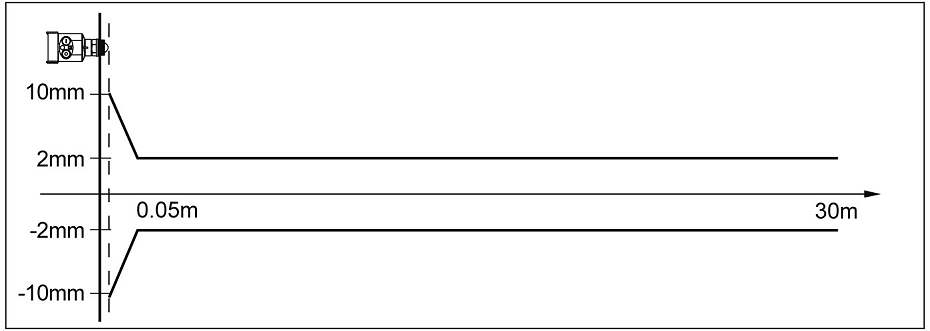
8.Installation Requirements
When installing the instrument, avoid installing it above the inlet, and try to avoid various objects that affect the signal, such as stirring paddles, etc.
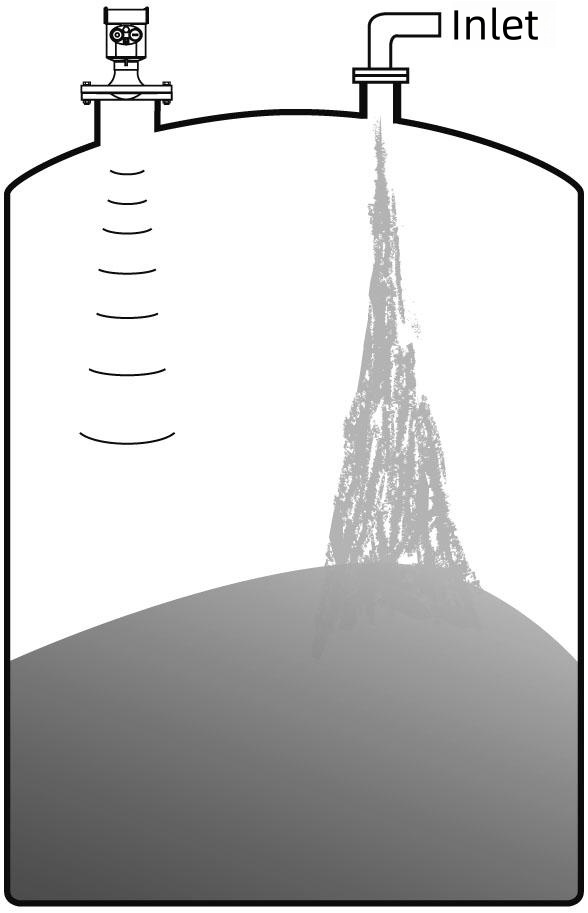
● Under extremely complex working conditions, the instrument can work normally without any obstacle in the area of 20cm radius centered on the radar installation point.
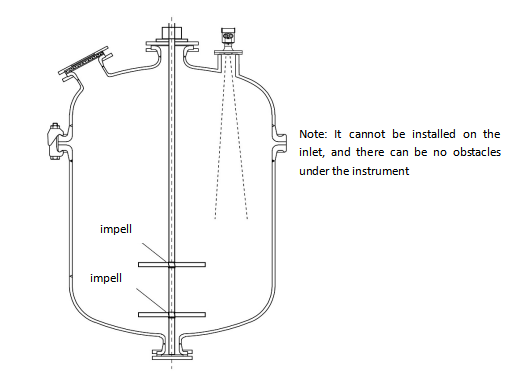
There must not be installed above the inlet, and there must be no obstacle below the meter
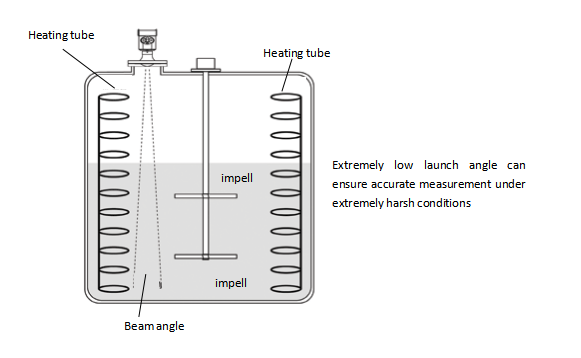
Under extremely complex working conditions, the instrument can work normally without any obstacle within a radius of 20cm centered on the radar installation point
9.Advantages and applications of FMCW radar level transmitter advantages
1. High signal strength
The radar antenna transmits ultra-high frequency radar signals (76~81GHz), with a higher signal-to-noise ratio and is hardly affected by material level fluctuations;
It can effectively measure materials with low reflectivity, oil and powder with low dielectric constant can also be perfectly measured;
2. Strong anti-interference
Higher signal-to-noise ratio makes radar measurements almost unaffected by level fluctuations;
The antenna is made of PTFE material, which can effectively prevent corrosion and hang materials;
In measuring tanks and silos with dust, condensation, attachments, etc., the radar wave can penetrate and directly reach the surface of the material level.
3. Small beam angle
Beam angle up to 3°
The extremely narrow beam angle makes the radar energy more focused; it can be used in narrow and long installation spaces without interference from false echoes; even if there are obstacles in the tank, such as stirring, heating coils, etc., the radar energy is concentrated; even if the range is up to 100m, the signal will not be too much attenuated. , the extremely narrow beam angle can also be successful Avoid, achieving accurate measurement.
4. Metrology-grade accuracy, small blind area
The measurement accuracy can reach ±1mm;
The blind area is less than 5cm;
Small blind areas and high precision make the radar suitable for measuring small storage tanks in industries such as medicine, petrochemicals, food, chemical and others.
FMCW radar level transmitter application:
*The blind area of product measurement is in the range of 7-8CM, which is suitable for the measurement of small storage tanks
*The product can reach 120M measurement range, suitable for the measurement of super large storage tanks
*The electromagnetic wave emission angle of the product is less than 3°, which is suitable for measurement in narrow spaces or guided wave pipes
*The product has extremely high measurement accuracy and is suitable for high-precision metrology-grade measurement
Echo processing algorithms are rich in the product, along with experience data from various environments and working conditions; it has unique characteristics for extremely harsh working conditions like strong dust and steam, or for storage tanks with special processes like stirring and heating rods, which other similar products don't have.
We are here to help you! If you close the chatbox, you will automatically receive a response from us via email. Please be sure to leave your contact details so that we can better assist